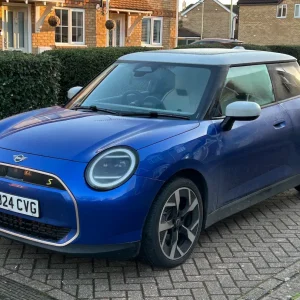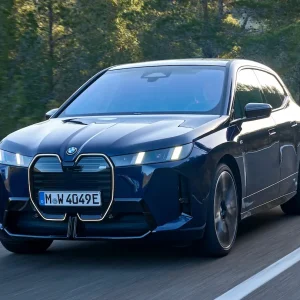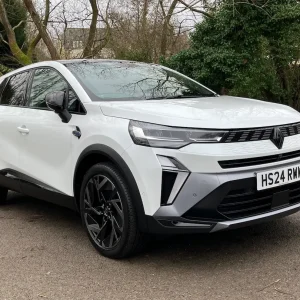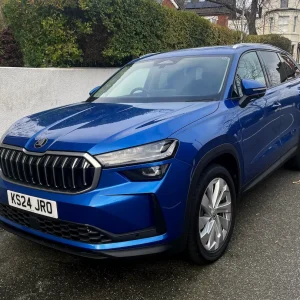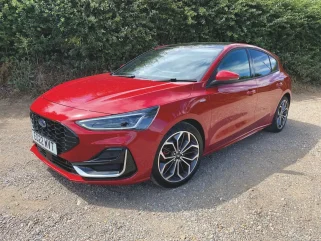
Any new Focus is a big deal, and the launch of the current fourth-generation range back in 2018 still doesn’t seem that long ago. Yet, the appearance of these mid-life facelifted versions seems slightly more muted considering what a top seller it has been for Ford.
Maybe this is because of the current semi-conductor crisis – as if you check out the UK website you quickly find out that Ford is currently not taking any new orders for the Focus. Or just like every other sector, the focus of this class is shifting towards SUVs, such as the Focus-based Kuga. After all, it has been reported that current Focus production will end by 2025.
Anyway, back to the current car and from outside, you’ll spot the new grille with prominently placed and larger Ford badge, new front bumper, and headlights at the front. Talking about the headlights, our test car received a further upgrade in the form of clever, powerful Matrix LEDs, although they are costly at £950. At the side there are new alloy wheel designs, while at the back there are revised taillights. Our car was also painted in lustrous Fantastic Red, priced at £400.
To go with the new look, the model line-up is revised, too. Trend is the entry-level equipment grade, then there’s also the more rugged Active, semi-sporty ST-Line and the range-topping Titanium. Plus, Vignale is now a more luxurious option pack rather than a stand-alone model. Our test car was in ST-Line spec with that optional
Vignale pack.
Inside, the Focus gets more significant tech upgrades, and on our ST-Line Vignale, this centres around the centre-console dominating 13.2in touchscreen display including Ford’s latest Sync 4 software. Despite moving the heating and ventilation control to the bottom of this screen, it is all logically laid out, easy to use and could be the best infotainment system in this class.
The digital instruments are also easy to read, although the graphics in our opinion could be more attractive. The driving position is comfortable and the seats supportive. Rear space remains as roomy as we remember it and in hatch form, the Focus still boasts a well-shaped 375-litre boot.
Other changes are under the Focus’s bonnet. Ford’s proven 1.0-litre Ecoboost petrol is now electrified with 48-volt mild hybrid technology. Our car was fitted with the most powerful version of this punchy and smooth engine with 155hp, and well-mated to slick six-speed manual transmission. This equals an official 52.3mpg combined figure and 121g/km CO2 emissions. Perhaps the Focus’s biggest problem is the fact that while rivals such as the Peugeot 308 and Vauxhall Astra have plug-in hybrid models, the Focus doesn’t. As such, its 30% BIK figure is some way off the 12% figure for the plug-in version of the Kuga SUV, making that perhaps the more obvious fleet choice. Elsewhere, there’s a useful, optional BLIS (Blind Spot Information System) available, that was fitted to our test car. For £525 the Focus actively scans for other vehicles, and will actively avoid them, too.
Unchanged is how brilliant the Focus is to drive. Firstly, the steering is impressively responsive, there’s very little body roll in corners, it has high grip levels, and this ST-Line still had a composed ride on the standard 18in wheels.
So, the mid-life facelift gives a thoroughly improved Focus – with probably the best infotainment system in its class. More importantly, this Ford’s core values of spacious interior and keen drive remain unchanged. If you can get one, it’s still worthy of serious consideration.
Ford Focus 1.0 Ecoboost mHEV ST-Line Vignale
P11D: £29,435
Residual value: 36.03%
Depreciation: £18,829
Fuel: £9,621
Service, maintenance and repair: £1,966
Cost per mile: 50.69p
Fuel consumption: 52.3mpg
CO2 (BIK %): 129g/km (30%)
BIK 20/40% a month: £147/£294
Luggage capacity: 375 litres
Engine size/power: 998cc/155hp

